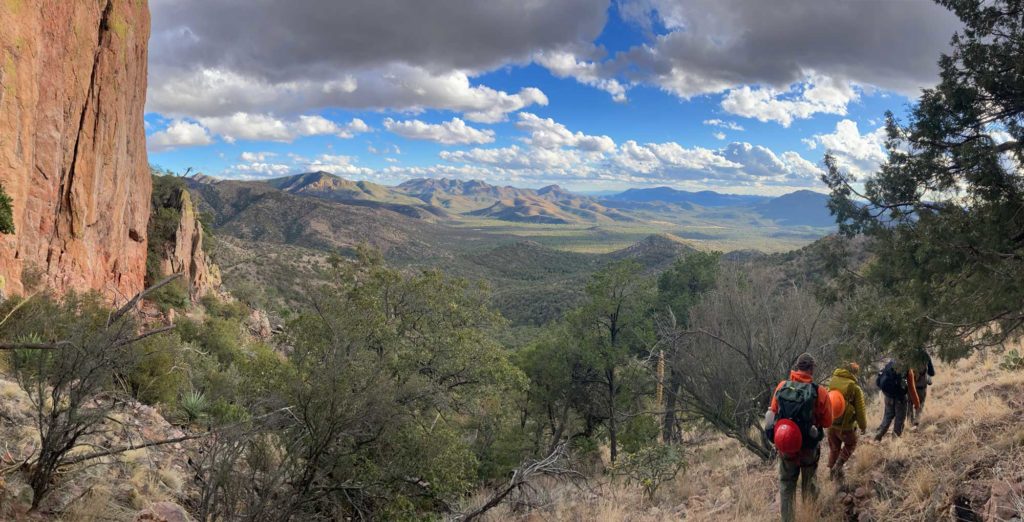
Written by Kile Stumbo, Wild Stew Field Crew Member.
Our illustrious crew leader, Dexter Kopas, guided our recent adventure into the Chiricahua Mountains. The crew consisted of the following wonderful humans: Ollie, Sage, Kile, and Jonathan (our tireless field operations manager who joined us for the first several days of our hitch). We all stayed at Rucker Station on the western side of the Chiricahua mountains while working on Turtle Mountain Trail #219.
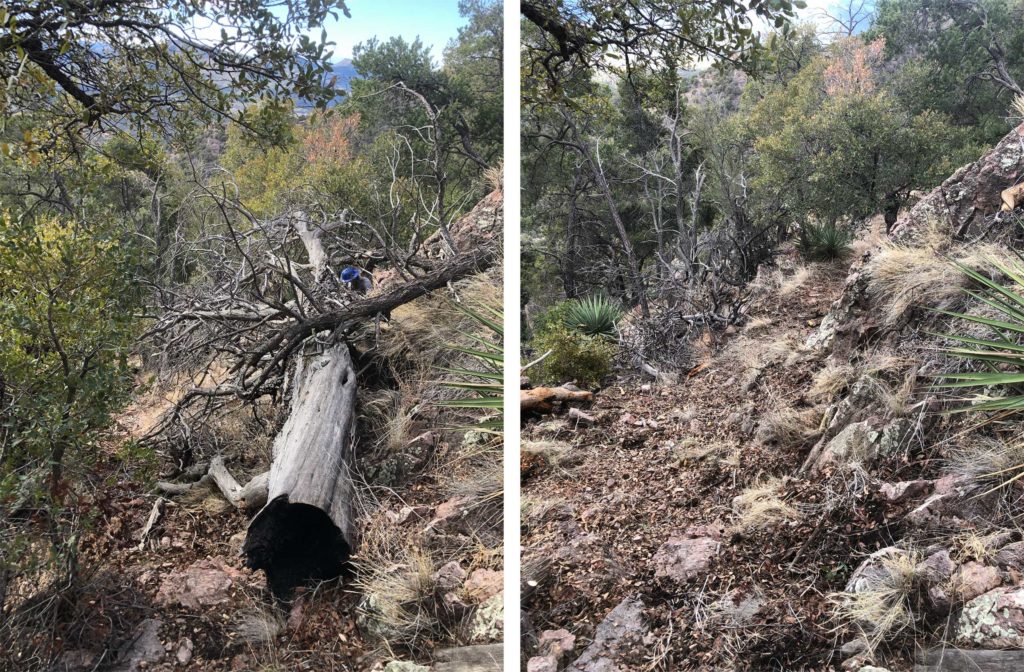
On Thursday we drove to the trailhead where we met several of the many cows in the area before hiking several miles up the trail, focusing on lopping, cutting, and digging young oak, pine, juniper, and yucca out of the corridor. Jonathan and Sage scouted further up towards the next saddle and marked the faint trail with some eye-catching hot pink flagging.
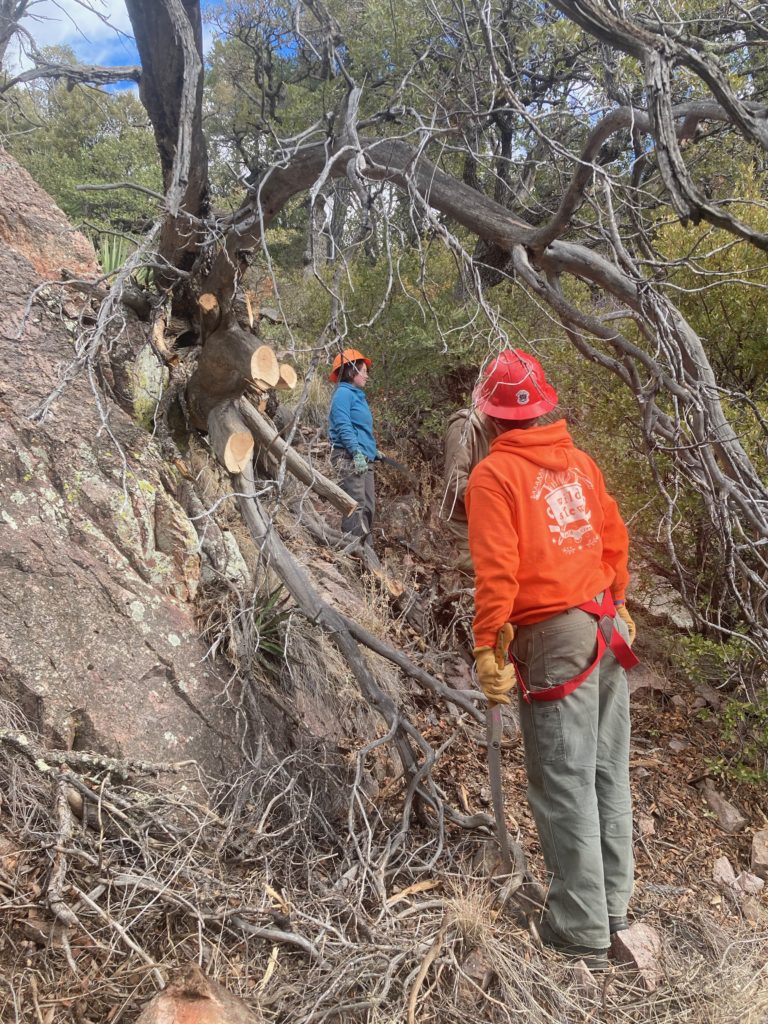
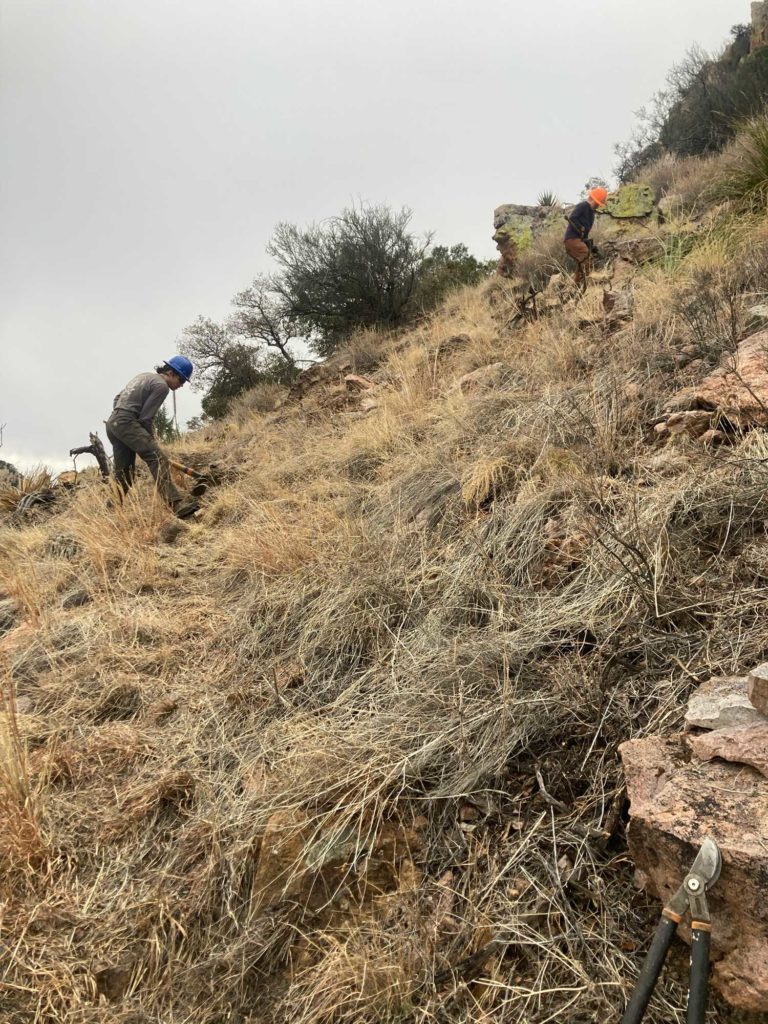
On Friday we got hit with a snowstorm throughout most of our work day, while we fixed some of the worst tread, built rock cairns, and continued to clear the trail corridor. After work we enjoyed the comfy heat of Rucker Station while celebrating “Bean Friday” with home-made crunchwraps graciously provided by Jonathan.
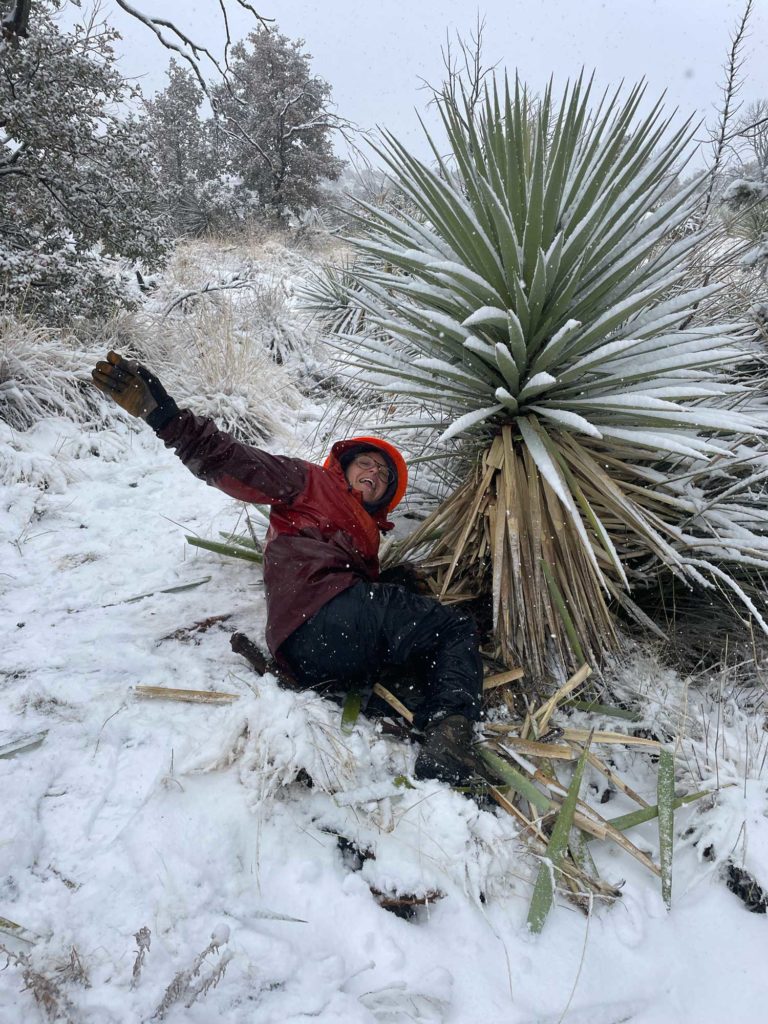
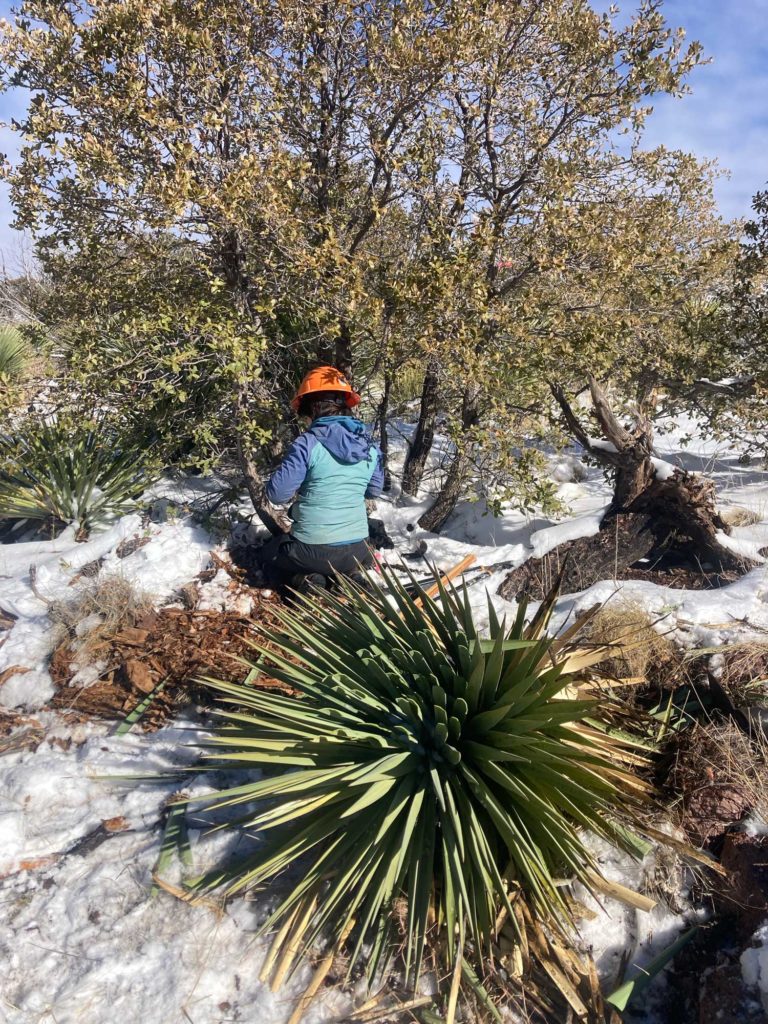
We said goodbye to Jonathan on Saturday when he left to join our other crew working on the Florida Trail in the Santa Rita Mountains, and we enjoyed mostly sunny weather through Monday while continuing our work with the added benefit of incredible views of the surrounding snowy mountains.
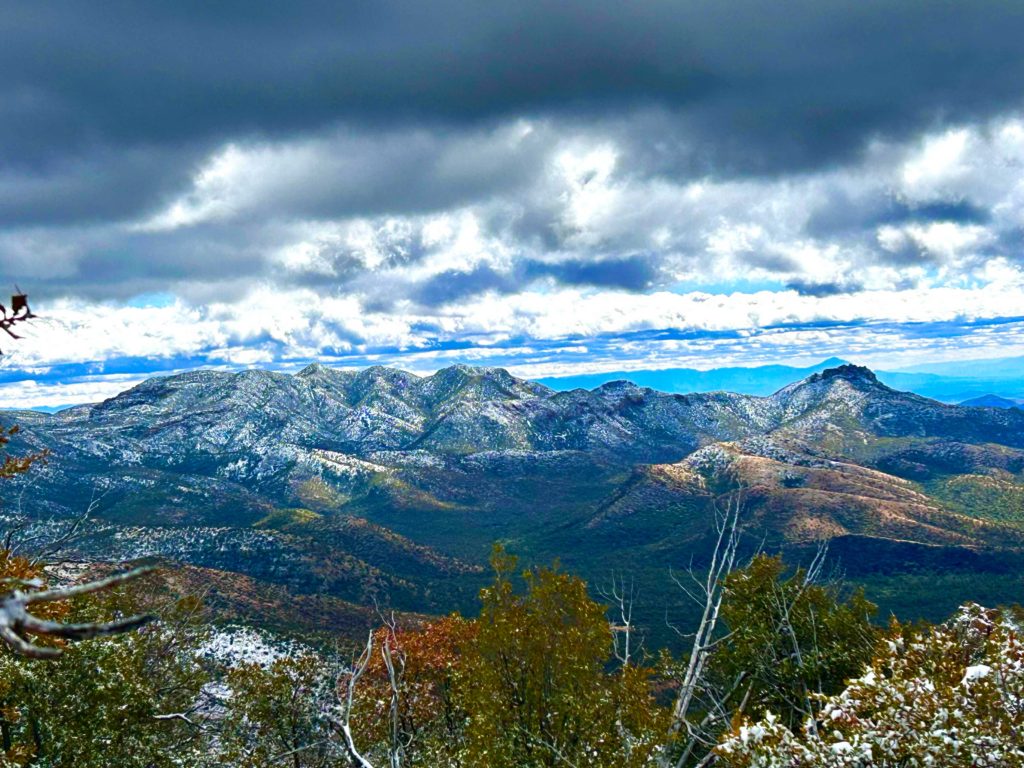
On Sunday, Sage discovered mountain lion tracks in the lovely blanket of snow! Hopefully that means that section of the newly cleared trail is “mountain lion approved”.
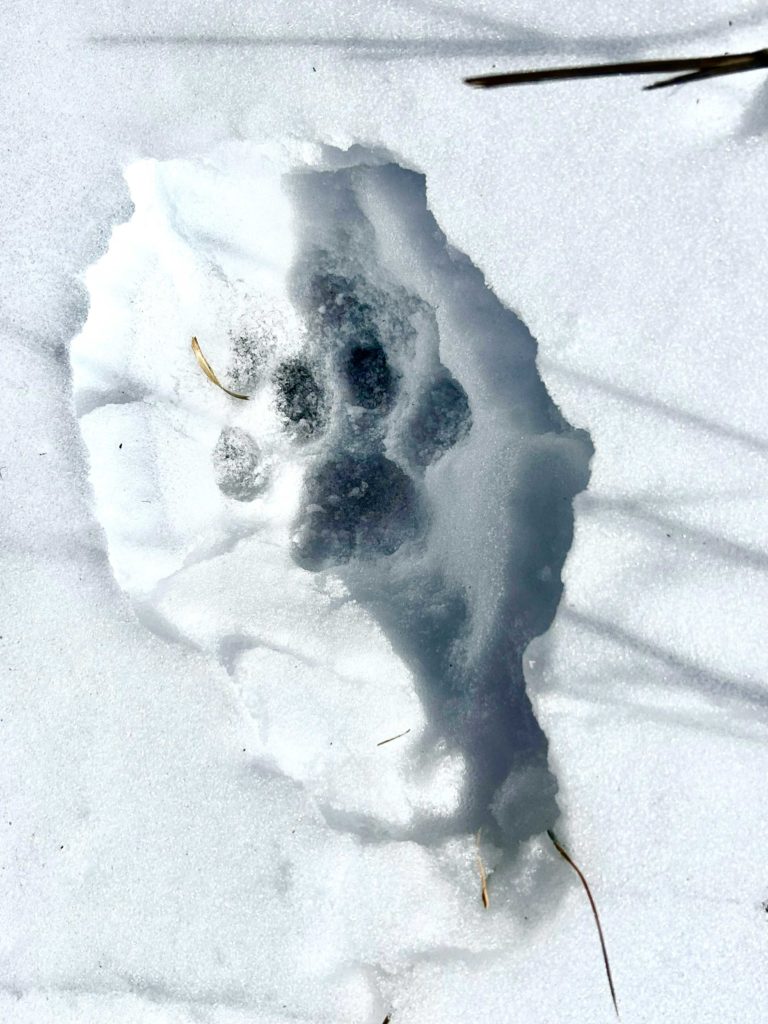
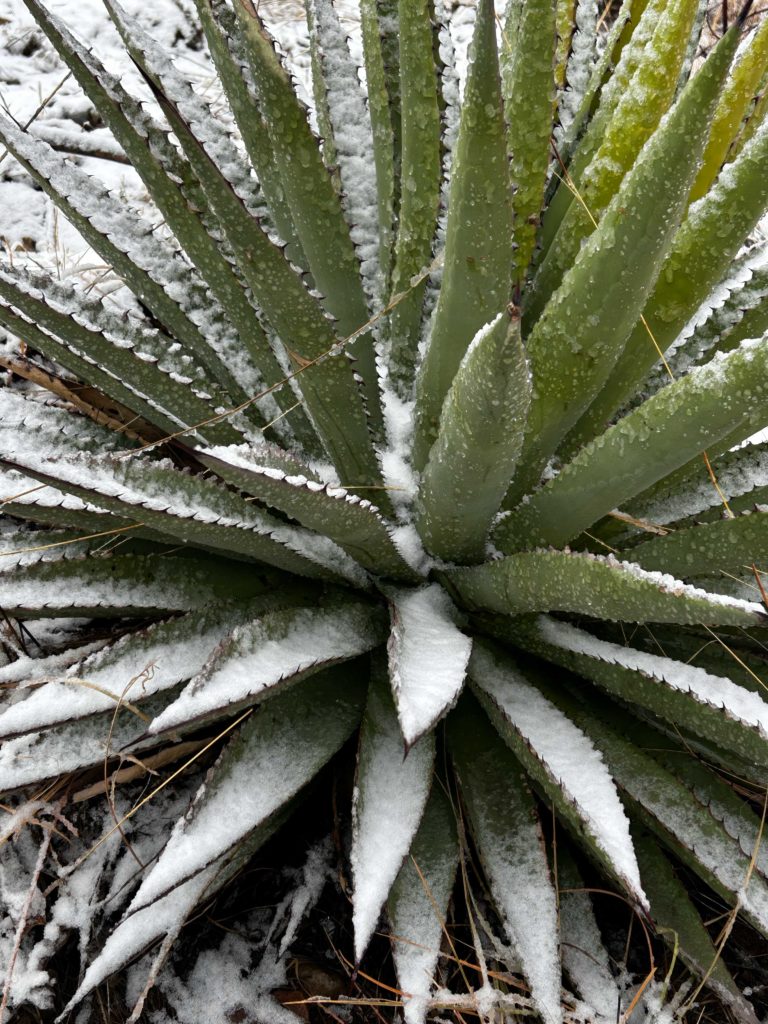
After work on Monday we went on a mini-adventure to check out the cave of the “Hermit of the Chiricahuas”, a Civil War veteran named Robert Monroe, who built a cabin and a tunnel into the side of a hill in the 1870s, about one mile from the historic Fort Rucker. His stated purpose for the tunnel was to have an escape route in case he was attacked by the local Apaches, according to a 1946 article written by Mary Kidder Rak in the Arizona Quarterly.
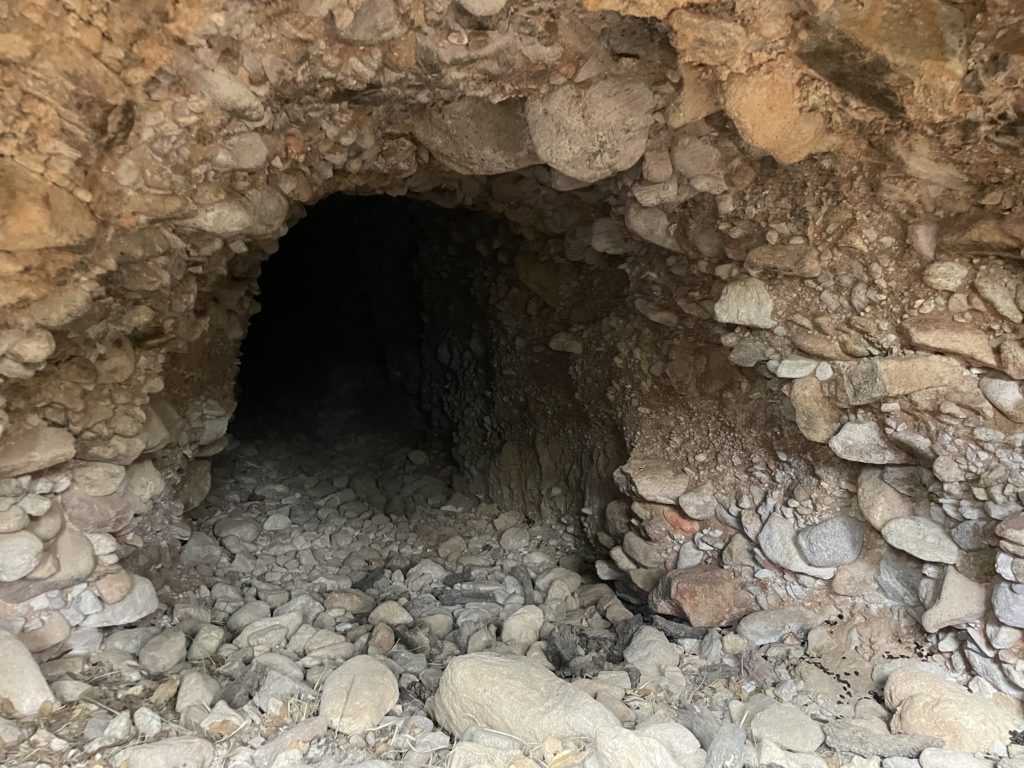
On our last full day of work we cleared more corridor and de-grassed tread (aka repeatedly whacked chunks of stubborn bunchgrass out of the tread) at the junction with the Sycamore Cub Trail before ending our work with a bit of lopping near the Turtle Mountain Trailhead.
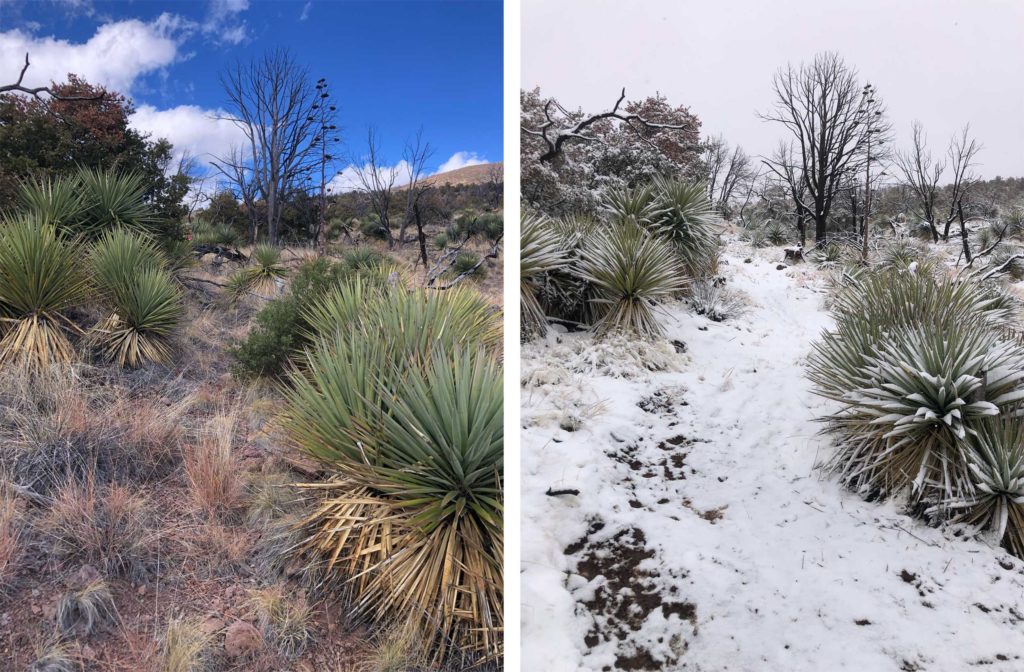
On Wednesday we packed up, cleaned the station, and said goodbye to some turkeys in the area before driving back to Tucson. In total we cleared the corridor and fixed tread along 0.8 miles of the trail north of the junction with Sycamore Cub Trail #219A. The work was slow going due to the overgrown and easy-to-lose trail that hasn’t been worked on for close to 13 years (since before the 2011 Horseshoe 2 wildfire). Luckily, the first 1.5 miles of the Turtle Mountain Trail will receive much-needed maintenance when it is worked on this summer by our Youth Conservation Corps crew.
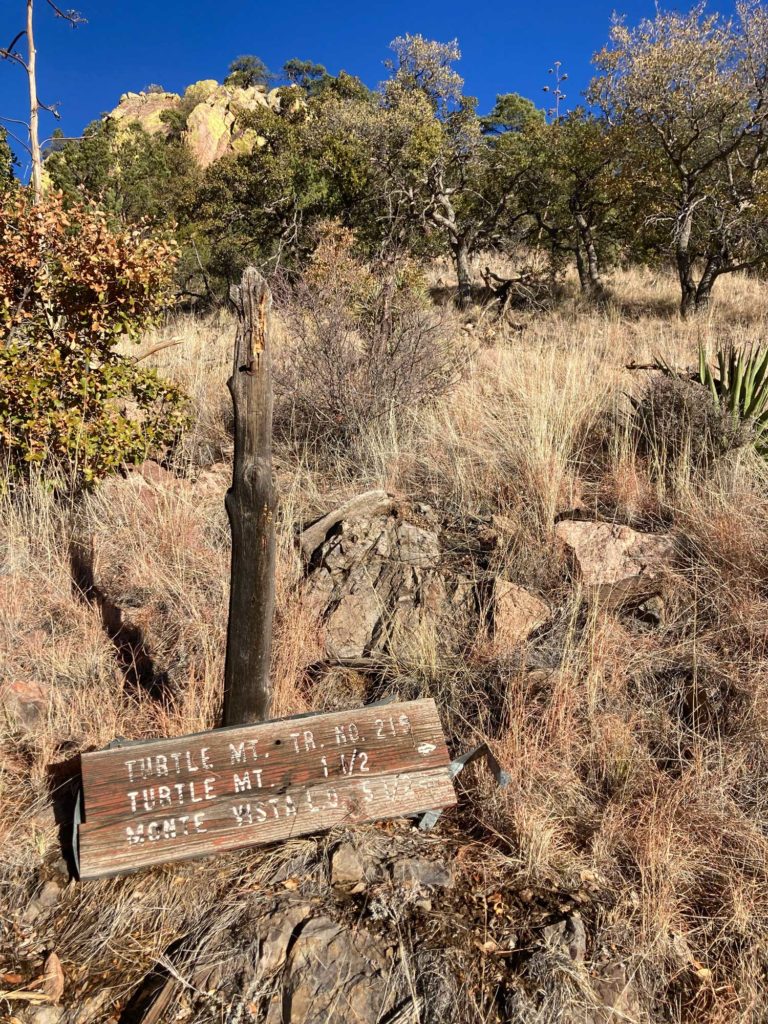
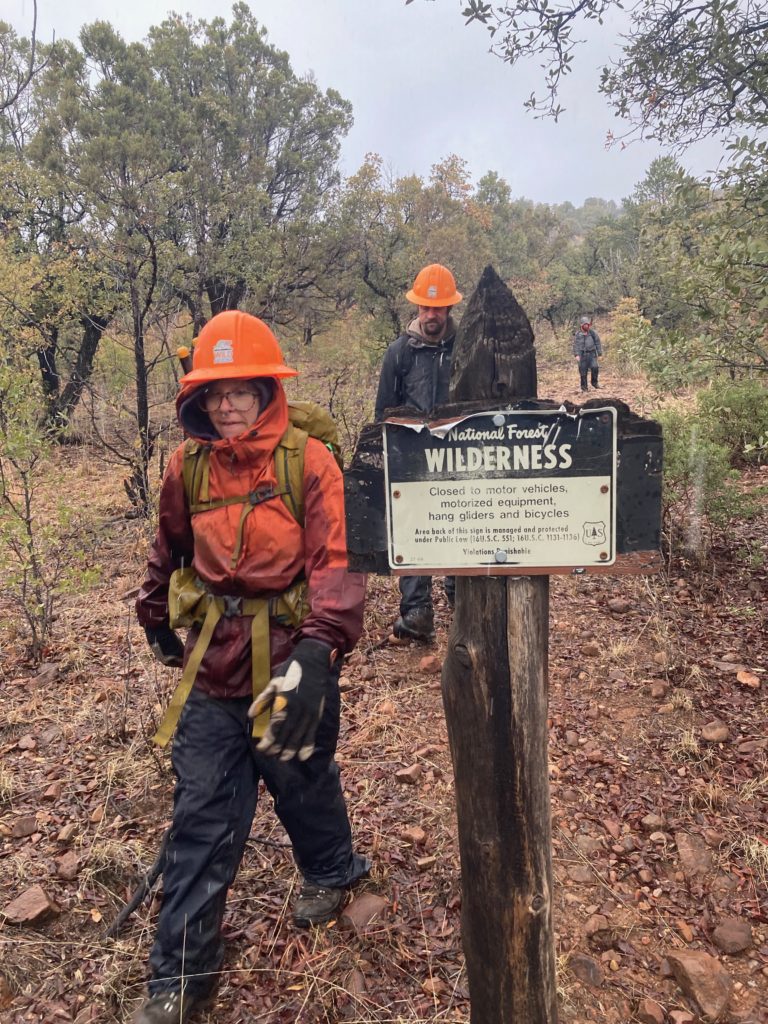
We’d like to thank our Forest Service partners for letting us stay in the wonderful Rucker facilities! We were very grateful for the cozy accommodations during several chilly and wet workdays, after which we made many delicious group meals, baked and devoured two delicious pumpkin pies, and enjoyed several movie nights.








